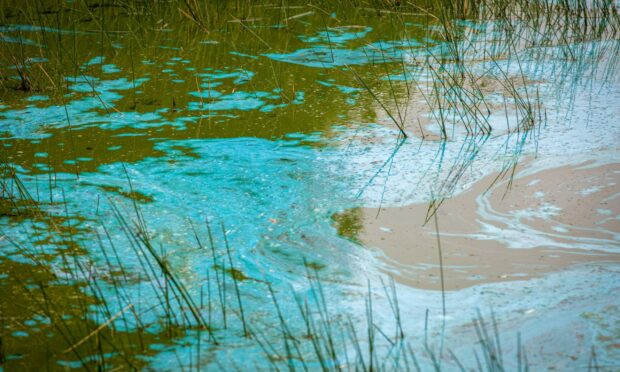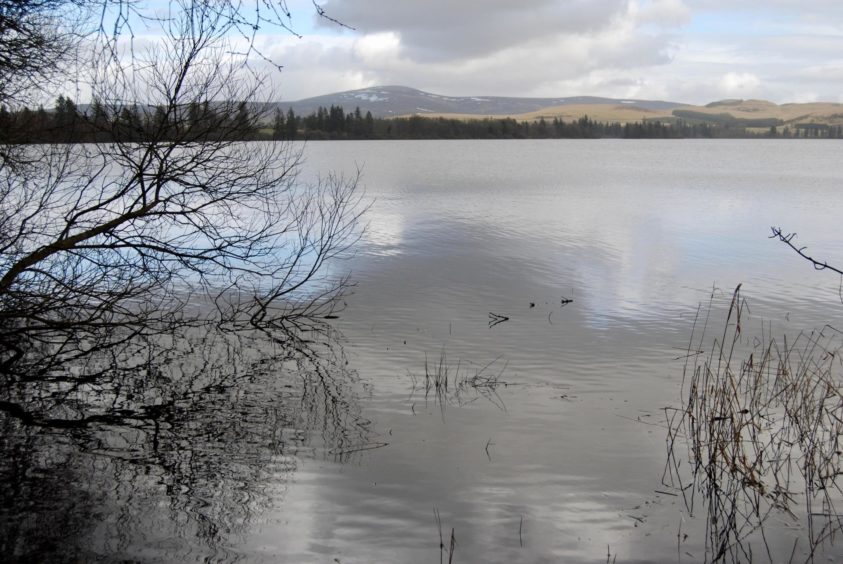Toxic algae is becoming more common in local lochs as climate change leads to warming waters.
Exposure to toxic blue-green algae is often fatal to dogs with owners regularly warned about the dangers of letting their pets swim in contaminated waters.
Recent research has shown 97% of Scottish lochs and reservoirs increased in temperature between 2015 and 2019 — helping hazardous algal blooms to thrive.
Three local lochs and reservoirs featured in the ground-breaking study carried out by Scotland’s Centre of Expertise for Waters (Crew).
They are Loch Freuchie in Perthshire, Loch Lintrathen and Loch Lee in Angus.
These lochs were all found to have warmed by about 0.4 degrees per year over the period.
Loch Leven in Kinross did not feature in the study, but it is showing a similar pattern.
Why is warming water in local lochs a problem?
Warming can create problems for a variety of loch dwelling species and makes it more likely for hazardous algal blooms to establish themselves.
Exposure to toxic blue-green algae is also often fatal to dogs, and can also cause long term health problems in those that survive after drinking or swimming in algae-contaminated water.
Perth and Kinross Council workers have put up signs warning dog owners in previous years.
Freshwater ecologist Dr Linda May is the lead author of the report. She works in the UK Centre for Ecology and Hydrology (UKCEH).
She said: “Periods of warm weather are usually associated with very low rainfall.
“This reduces the rate at which water passes through the loch. That exacerbates the problems with blooms.
“This can be seen in many lochs across Tayside and Fife over the summer.”
She said Loch Leven – where algal blooms are a growing problem – did not feature in this particular study.
But waters in the key nature reserve, tourist attraction and fishing loch are also warming.
“Loch Leven is a key long-term monitoring site for UKCEH. We have been collecting data there at fortnightly intervals since 1968,” she added.
“The long-term record shows that Loch Leven is warming and that algal blooms are becoming more common as a result.”
The Crew researchers discovered 88% of all Scottish lochs warmed by 0.25°C to 1.0°C per year between 2015 and 2019, while nine per cent increased by more than that – a few by up to 1.3°C per year.
The Loch of Lintrathen is a reservoir for Angus and Dundee.
During the summer, the area is home to breeding songbirds and, in winter, large numbers of wintering birds, particularly greylag geese.
Loch Freuchie is around six miles from Kenmore in Highland Perthshire, while Loch Lee can be found in Glen Esk in Angus.













Conversation